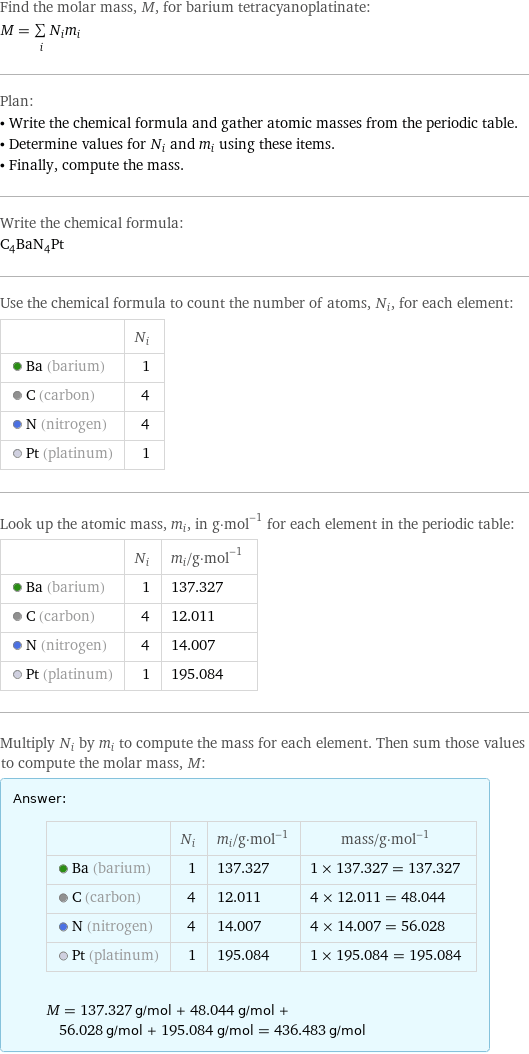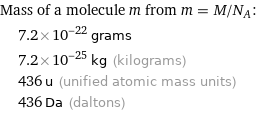Input interpretation

barium tetracyanoplatinate | molar mass
Result

Find the molar mass, M, for barium tetracyanoplatinate: M = sum _iN_im_i Plan: • Write the chemical formula and gather atomic masses from the periodic table. • Determine values for N_i and m_i using these items. • Finally, compute the mass. Write the chemical formula: C_4BaN_4Pt Use the chemical formula to count the number of atoms, N_i, for each element: | N_i Ba (barium) | 1 C (carbon) | 4 N (nitrogen) | 4 Pt (platinum) | 1 Look up the atomic mass, m_i, in g·mol^(-1) for each element in the periodic table: | N_i | m_i/g·mol^(-1) Ba (barium) | 1 | 137.327 C (carbon) | 4 | 12.011 N (nitrogen) | 4 | 14.007 Pt (platinum) | 1 | 195.084 Multiply N_i by m_i to compute the mass for each element. Then sum those values to compute the molar mass, M: Answer: | | | N_i | m_i/g·mol^(-1) | mass/g·mol^(-1) Ba (barium) | 1 | 137.327 | 1 × 137.327 = 137.327 C (carbon) | 4 | 12.011 | 4 × 12.011 = 48.044 N (nitrogen) | 4 | 14.007 | 4 × 14.007 = 56.028 Pt (platinum) | 1 | 195.084 | 1 × 195.084 = 195.084 M = 137.327 g/mol + 48.044 g/mol + 56.028 g/mol + 195.084 g/mol = 436.483 g/mol
Unit conversion

0.43648 kg/mol (kilograms per mole)
Comparisons

≈ 0.61 × molar mass of fullerene ( ≈ 721 g/mol )

≈ 2.2 × molar mass of caffeine ( ≈ 194 g/mol )

≈ 7.5 × molar mass of sodium chloride ( ≈ 58 g/mol )
Corresponding quantities

Mass of a molecule m from m = M/N_A: | 7.2×10^-22 grams | 7.2×10^-25 kg (kilograms) | 436 u (unified atomic mass units) | 436 Da (daltons)

Relative molecular mass M_r from M_r = M_u/M: | 436